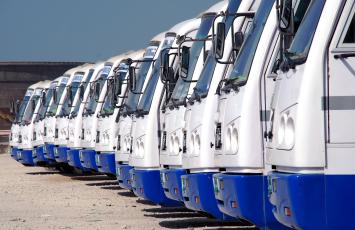BV BLOGS
EV CHARGING & ASSET MANAGEMENT
Michael Hardy
Asset Management Leader | Bureau Veritas - Buildings & Infrastructure Group
As electric vehicles (EVs) become more popular, there is a growing need for electric vehicle charging infrastructure. This presents a unique challenge for asset managers who are responsible for managing the built environment and real property assets.
Asset management in the context of the built environment and real property assets involves the management of physical assets such as buildings, infrastructure, and land. This includes the planning, design, construction, operation, maintenance, and disposal of these assets. As EV charging infrastructure is a relatively new addition to the built environment, asset managers need to consider the impact of EV charging on their existing assets and plan for the integration of EV charging infrastructure into their properties.
BV's EV Charging Services:
-
TURNKEY INSTALLS
-
WARRANTY WALK
-
GO BACK PROGRAMS
-
TESTING & VERIFICATION
According to a report by Grand View Research, the global EV charging infrastructure market size is expected to reach USD 140.98 billion by 2027, growing at a compound annual growth rate (CAGR) of 33.4% from 2020 to 2027.
The integration of EV charging infrastructure into the built environment requires careful planning and coordination. Asset managers need to consider a number of factors such as the location, accessibility, and capacity of their properties. They also need to consider the technical requirements of EV charging infrastructure such as the type of charging stations and the electrical capacity of their properties.
Asset managers also need to consider the impact of EV charging infrastructure on their existing assets. For example, the installation of EV charging stations may require modifications to existing electrical systems or parking areas. Asset managers need to ensure that these modifications are carried out in a safe and efficient manner and that they comply with relevant regulations and standards.
The integration of EV charging infrastructure into the built environment can provide a number of benefits for asset managers.
-
It can enhance the value of their properties by providing a desirable amenity for tenants and customers.
-
It can help promote #sustainability and reduce carbon emissions.
-
It can help future-proof their properties by providing a necessary infrastructure for the growing EV market.
Property owners should consider investments in EV charging in the context of their Strategic Asset Management Plan and the guidance provided in #ISO55000. EV charging infrastructure isn't immune from the rules of planning and good governance just because it's the hot new thing.
Learn more about ISO55000 - the international management system standard for Asset Management by visiting the Asset Leadership Network or the International Organization for Standardization.
In conclusion, managing the built environment and real property assets in relation to EV charging infrastructure requires careful planning and coordination. Asset managers need to consider the impact of EV charging on their existing assets and plan for the integration of EV charging infrastructure into their properties. The integration of EV charging infrastructure can provide a number of benefits for asset managers, including enhancing the value of their properties, promoting sustainability, and future-proofing their assets.
As part of our comprehensive Green Line Services and Solutions in which we help clients execute effective sustainability strategies, Bureau Veritas has developed a best-in-class Electric Vehicle Charging team. We continue to invest heavily to be a preferred strategic partner of Electric Vehicle Charging deployments worldwide, knowing that electric cars and the associated infrastructure needs will play a major environmental role on a global scale in leading us to a greener future.
Transportation in the U.S. is becoming more sustainable, competitive, and innovative. Fleet Electrification produces no harmful emissions and is less expensive to fuel and maintain. As light-duty electric vehicle (EV) sales continue to grow, fleet and sustainability managers are counting on advances in power electronics, battery prices, and battery performance to mainstream medium and heavy-duty vehicle electrification. BV is at the helm to help implement fleet electrification programs.


